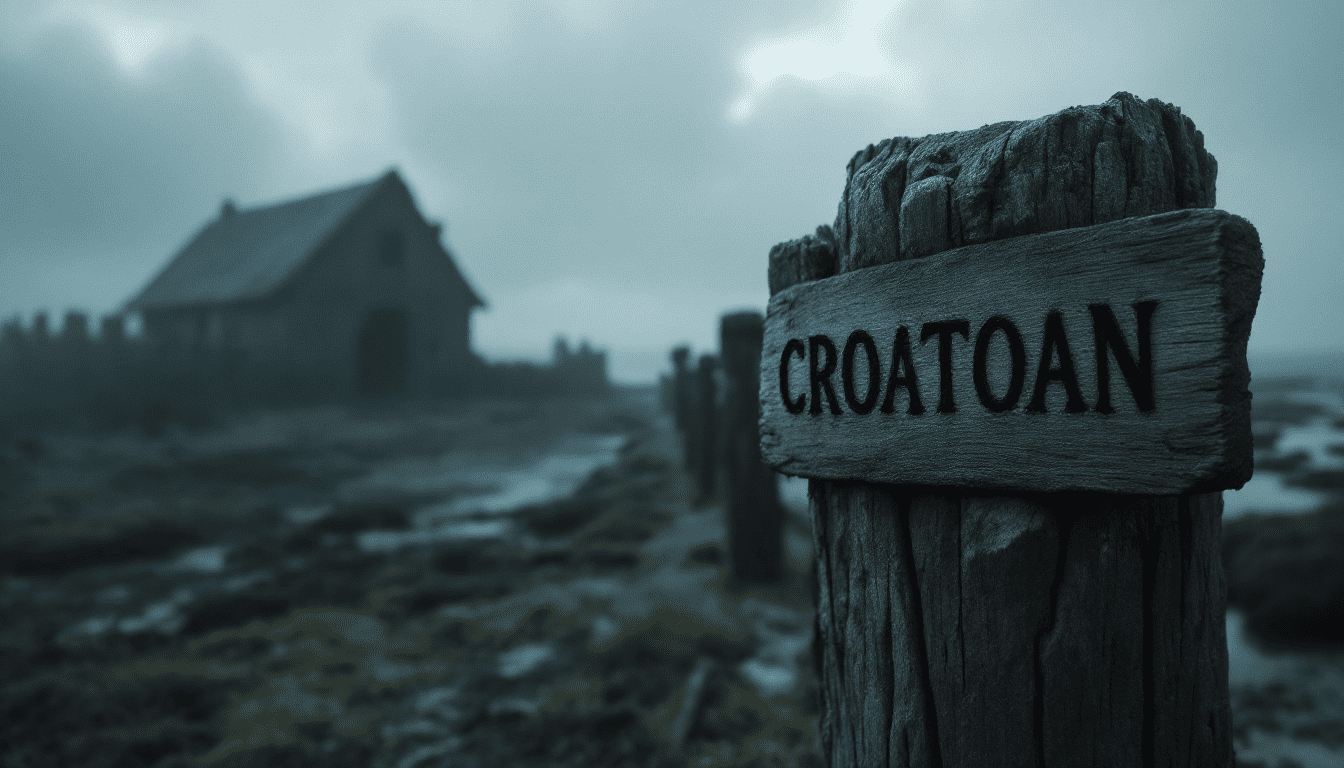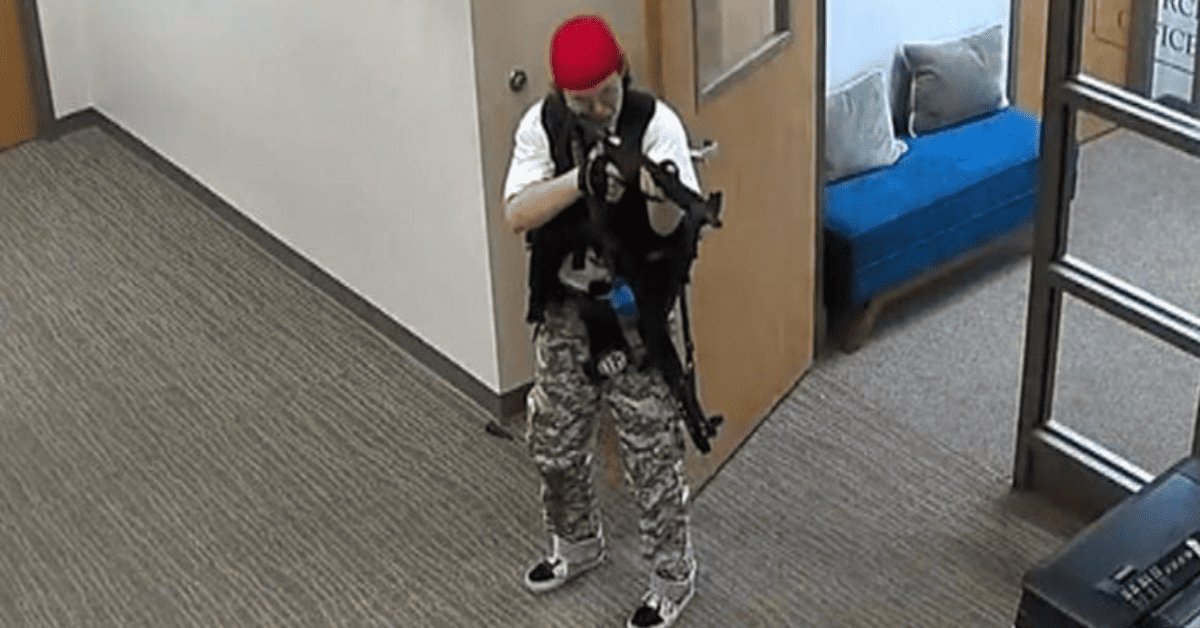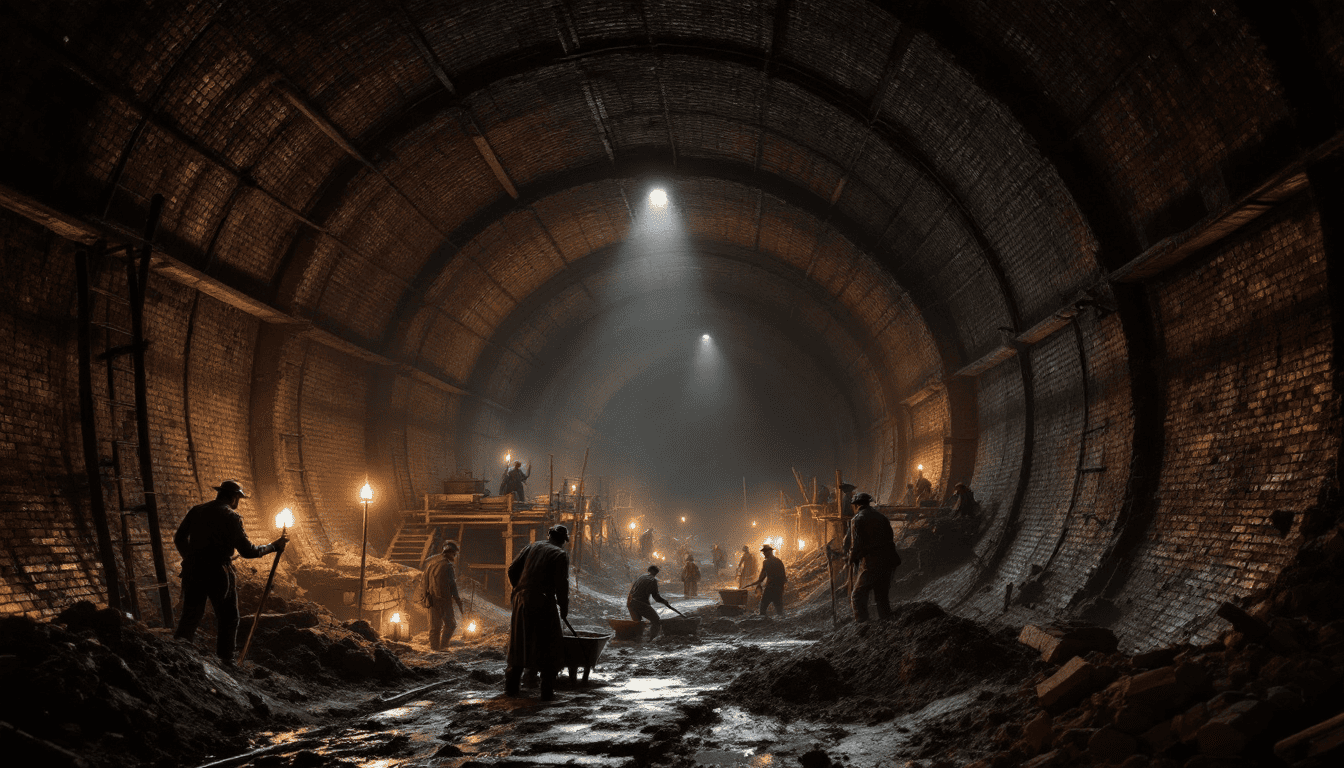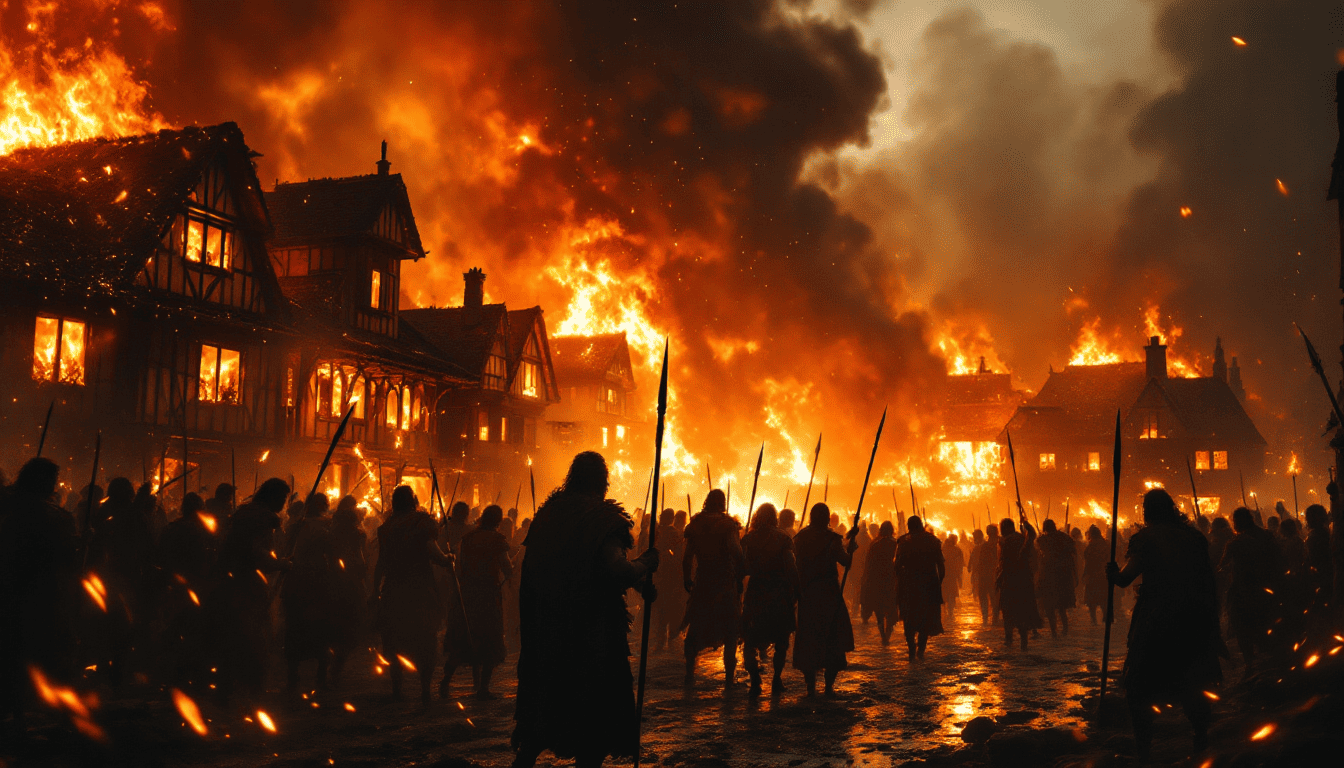The Lost British American Colony Of Roanoke
In 1587, 117 English colonists vanished from Roanoke Island. No bodies. No graves. Just one word carved into wood: CROATOAN. It's America's greatest mystery—but Britain has forgotten it ever happened. This is the story of our lost children, and the 400-year search for answers.

August 18, 1590. Governor John White stepped onto Roanoke Island for the first time in three years. It was his granddaughter's third birthday.
The settlement was empty.
Where 117 men, women, and children had lived—including White's own daughter Eleanor—there was nothing. No bodies. No graves. No signs of struggle. The houses had been carefully dismantled, not destroyed. The fort's palisade stood intact, undamaged.
Carved into a wooden post: a single word.
CROATOAN.
The Lost Empire
Most Britons have never heard of Roanoke. Ask about the first English colonies in America and you'll hear of Jamestown, perhaps Plymouth Rock. But Roanoke came first. Twenty years before Jamestown, England attempted something audacious: establishing the first permanent English settlement in the New World.
The venture began with Sir Walter Raleigh—poet, soldier, explorer, and favourite of Queen Elizabeth I. Fresh from suppressing rebellion in Ireland with characteristic brutality, Raleigh turned his ambitions westward. In 1584, Elizabeth granted him a charter to claim any lands "not actually possessed by any Christian prince." The territory he claimed, he named Virginia, honouring his monarch, the Virgin Queen.
Raleigh never set foot in the New World himself. He sent others.
The First Vanishing
The initial expedition in 1585 should have been Britain's warning. Raleigh dispatched roughly 108 men—soldiers, not settlers—to establish a military outpost on Roanoke Island, off what we now call North Carolina's Outer Banks. The location seemed strategically brilliant: close enough to Spanish shipping lanes for privateers to harass treasure fleets sailing from the Caribbean.
The colony lasted barely a year. Relations with the native Algonquian tribes deteriorated rapidly. After the English beheaded a chief named Wingina, the situation became untenable. When Sir Francis Drake, fresh from circumnavigating the globe and raiding Spanish ports, stopped by in June 1586, the starving colonists begged him to take them home.
Drake did.
But here's where it gets strange.
Shortly after Drake departed with the colonists, a resupply ship arrived. Finding the settlement abandoned, they left supplies and departed. Then Sir Richard Grenville arrived with three ships and 400 men. He also found Roanoke deserted. Inexplicably, he decided to leave fifteen volunteers behind to maintain England's claim.
Those fifteen men were never seen again.
No trace of them was ever found. No bones. No belongings. Nothing.
Raleigh, undeterred, planned a third attempt.
The Families
The 1587 expedition was different. This time, Raleigh sent entire families—115 to 118 souls (records conflict), including seventeen women and eleven children. These weren't soldiers establishing an outpost. They were colonists building a future.
John White, an artist and cartographer who'd documented the previous expedition, was appointed governor. His pregnant daughter Eleanor sailed with him, along with her husband Ananias Dare.
The plan was to settle on Chesapeake Bay, far from the trouble spots of the previous colony. But the expedition's pilot—a Portuguese navigator named Simon Fernandes—had other ideas. Whether through incompetence or malice, he refused to take them further than Roanoke Island. The colonists, stranded, had no choice but to repair the abandoned settlement.
On August 18, 1587, Eleanor Dare gave birth to a daughter. They named her Virginia—the first English child born in the Americas.
Nine days later, John White sailed for England to fetch supplies. He promised to return within months.
It would be three years before he saw Roanoke again.
The Armada
White's timing could not have been worse. When he reached England in November 1587, the country was preparing for war. King Philip II of Spain—enraged by English privateers plundering his treasure ships and Protestant England's support for Dutch rebels—was assembling the greatest fleet the world had ever seen.
In July 1588, 130 Spanish ships carrying 18,000 men entered the English Channel. Every available English vessel was commandeered to face the Spanish Armada. White's resupply mission became impossible.
The Spanish were defeated, scattered by English fireships and Atlantic storms. Spain's invincibility was shattered. England became a naval power.
But the colonists at Roanoke were forgotten.
White managed to secure two small ships in April 1588, three months before the Armada. Both were damaged in fights with French vessels and limped back to England. It wasn't until August 1590—exactly three years after he'd left—when White finally convinced a privateering expedition to drop him at Roanoke.
The Return
The settlement appeared almost normal. The fort's palisade stood strong, even reinforced. But when White entered, his heart sank.
Empty.
Every house carefully dismantled. Personal effects gone. His own belongings, buried before he'd left, had been dug up and scattered by the elements. But there were no signs of violence. No blood. No battle damage. No hastily abandoned meals or overturned furniture.
Just that word carved into the palisade post: CROATOAN.
And on a nearby tree: CRO.
Before leaving, White had instructed the colonists to carve their destination if they moved, and to add a Maltese cross if they left under duress. There was no cross.
White believed they'd relocated to Croatoan Island (now Hatteras Island), home to the Croatoan tribe. The colonists had maintained good relations with the Croatoans; their chief Manteo had even travelled to England with earlier expeditions and been baptised Christian.
White prepared to investigate immediately.
Then a hurricane struck.
The ships lost three anchors fighting the storm. The fleet's captain, anxious to resume privateering in the Caribbean, refused to wait. They sailed for England, leaving the mystery unsolved.
John White never saw his daughter or granddaughter again. He never learned what happened to them.
Neither has anyone else.
The Hoax
The mystery festered for centuries. Then, in November 1937—Virginia Dare's 350th birthday—a man named Louis Hammond walked into Emory University in Atlanta carrying a 21-pound stone.
He claimed he'd found it near the Chowan River in North Carolina whilst gathering hickory nuts. The stone was covered with crude carvings. Scholars deciphered the message:
Father Soone After You Goe for England Wee Cam Hither. Onlie Misarie & Warre. Ananais to Slaine wth Much Misarie. Mine Childe Ded.
It was signed: EWD. Eleanor White Dare.
The stone told a horrifying tale. Two years of warfare with natives. Most colonists killed by shamans who claimed the spirits were angry. Only seven survivors, including Eleanor. Her husband Ananias and daughter Virginia were dead.
Emory scholars were electrified. The nation's oldest mystery appeared solved.
Then more stones arrived. Forty-eight in total. They told an elaborate story: Eleanor marrying a Cherokee chief, giving birth to another daughter named Agnes, dying in 1599 in a cave near present-day Atlanta.
The stones created a media sensation. President Franklin Roosevelt had just commemorated Virginia Dare's birthday. A new play about the Lost Colony had opened on Roanoke Island to massive acclaim.
In April 1941, the Saturday Evening Post published a devastating exposé.
The stones were forgeries. Nearly all of them could be traced to a Georgia stonecutter named Bill Eberhardt, who'd been paid $2,000 for his work. The elaborate tale of Eleanor's survival was fiction, created to exploit America's obsession with the Lost Colony.
Careers were destroyed. The stones became an embarrassment, locked away in a university basement for decades.
But here's the twist: the first stone—Hammond's stone—might be real.
No one could conclusively prove it was forged. When sliced open in 2016, the rock's interior was bright white, whilst the exterior and carvings were darkened by weathering. A forger would struggle to achieve this effect. Elizabethan language experts found nothing definitively anachronistic in its wording. The stone remains, to this day, unproven either way.
A mystery within a mystery.
The Hidden Map
In 2012, researchers at the British Museum made a discovery whilst examining one of John White's maps—La Virginea Pars, painted in the Elizabethan era.
Under special lighting, they found something invisible to the naked eye: corrections made in a different medium, like invisible ink.
Beneath a patch on the map covering a location about fifty miles inland from Roanoke, symbols emerged. The outlines of a fort.
Why hide a fort on a map? The Spanish. England and Spain were at war; concealing strategic positions made sense. In fact, Spanish ships were searching for the Roanoke colony in 1588. A Spanish explorer named Vicente González discovered what he believed was the abandoned English settlement but couldn't investigate thoroughly before the defeat of the Armada scrambled Spain's priorities.
The hidden fort on White's map sat exactly where the colonists had told him they might relocate: fifty miles inland, away from Spanish ships.
Archaeologists excavated the site. They found fragments of 16th-century English pottery. Border ware. A piece of Spanish olive jar similar to those found at Jamestown. But crucially, they found no tobacco pipes—ubiquitous at Jamestown, established in 1607, but rare before.
Some of the colonists, it seemed, had indeed moved inland.
The Other Trail
Simultaneously, different evidence emerged from Hatteras Island—the old Croatoan territory.
The Croatoan Archaeological Project, working since 1998, uncovered thousands of artifacts in native village sites. English items mixed with Algonquian pottery. Copper rings made from drawn wire—a European technology. A lead pencil. Border ware ceramics. All dating to the right period.
The copper rings are particularly intriguing. Copper held spiritual significance for native tribes but had to be traded from Europeans. The Spanish didn't venture this far north. The French hadn't reached the area. These items came from English settlers.
Most tellingly, archaeologists found round post holes where natives constructed longhouses sitting just twenty-five to sixty feet from square post holes made by English colonists during the same period.
"They were in the Indian village surrounded by longhouses," one researcher explained.
The colonists hadn't vanished. They'd integrated.
DNA and Ghosts
Modern science has joined the hunt. The Lost Colony Center for Science and Research is conducting DNA testing on families in the region, looking for European genetic markers mixed with Native American ancestry.
The Lumbee tribe has long claimed descent from the Roanoke colonists. Some members have surnames matching colonists' names. They possess certain linguistic quirks and cultural traditions neither typically English nor typically Algonquian.
Meanwhile, on Roanoke Island itself, the outdoor drama "The Lost Colony" has been performed nearly every summer since 1937. It's the longest-running outdoor drama in the United States. Eighty-seven years of performances, telling a mystery still unsolved.
What Really Happened?
The evidence suggests the colonists split into at least two groups.
One group likely moved to the Chesapeake Bay area, their original destination. English artifacts found inland match this theory. These colonists may have been killed years later by Powhatan warriors before Jamestown's founding—reports from Jamestown settlers mentioned hearing such stories from natives.
Another group—possibly the majority—joined Manteo's Croatoan tribe on Hatteras Island. They intermarried, had children, survived for generations. Their descendants walk among us.
But the truth remains frustratingly incomplete. Archaeological evidence provides fragments, not storylines. DNA studies show possibilities, not certainties. We know more than we did, yet the full story eludes us.
Perhaps it always will.
Britain's Forgotten Children
Roanoke represents something peculiar in British history: an imperial venture we've collectively forgotten. Whilst Americans obsess over the Lost Colony—their Atlantis, their Marie Celeste—we barely acknowledge it existed.
Yet Roanoke was ours. Eleanor Dare was English. Virginia Dare was English, born under English colours on English-claimed soil. The tragedy of their disappearance is a British tragedy.
Sir Walter Raleigh's colonial dreams ended at Roanoke. After the colony's loss, his interest waned. He turned to other schemes—hunting El Dorado in South America, courting controversy at Elizabeth's court, eventually ending up imprisoned in the Tower of London. King James I, Elizabeth's successor, had him beheaded in 1618 for treason.
But Roanoke's legacy lived on. The lessons learned from its failure informed Jamestown's success seventeen years later. England's American empire, which would eventually span a continent, began with those 117 souls who vanished into the North Carolina wilderness.
We remember Drake circumnavigating the globe. We remember defeating the Spanish Armada. We remember Raleigh's later adventures and gruesome end.
But we've forgotten Roanoke.
The Enduring Mystery
Stand on Hatteras Island today. The wind howls across the Outer Banks. Storms batter the barrier islands. The ocean gradually reclaims the land.
Somewhere beneath the sand and soil, beneath the centuries of sediment, lie traces of what happened. Perhaps there are graves. Perhaps there are more artifacts. Perhaps there are answers.
Or perhaps the mystery is the answer.
Roanoke teaches us how easily people can vanish, how fragile our certainties are, how quickly history forgets. One hundred and seventeen English men, women, and children stepped off ships onto an alien shore. They built homes. They had families. They made choices.
Then they disappeared.
Four centuries later, we're still looking for them.
The word carved into wood has weathered away. The palisade has long since rotted. The settlement's exact location has been swallowed by time. But the mystery endures, as persistent as that Atlantic wind, as haunting as a three-year-old's third birthday spent waiting for a grandfather who would never arrive.
CROATOAN.
One word. A clue or a red herring? A destination or a warning? A friendly tribe's name or something darker?
We'll likely never know.
And perhaps, in the end, that's precisely what makes Roanoke unforgettable: not the answer, but the question. Not the ending, but the absence of one.
Britain's first American colony didn't fail. It didn't succeed either.
It simply vanished.
The outdoor drama "The Lost Colony" continues to perform on Roanoke Island each summer. Archaeological excavations continue. DNA studies remain ongoing. Somewhere, in church records or soil samples or genetic markers, the truth may still be waiting. Four hundred and thirty-eight years after Eleanor Dare gave birth to Virginia, we're still searching for Britain's lost children.
They're out there somewhere.
Perhaps they always will be.




